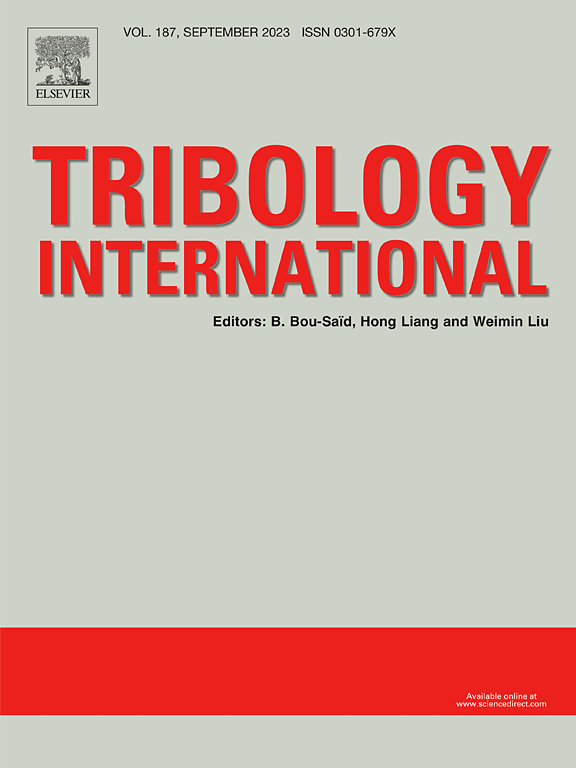A method of self-healing hydrophobic organic coating with gradient texture implantation: Tackling the challenge of bearing corrosion and friction
IF 6.1
1区 工程技术
Q1 ENGINEERING, MECHANICAL
引用次数: 0
Abstract
Bearing steel needs protection in marine environments due to its extreme lack of corrosion resistance. However, traditional anti-corrosion coatings face the problem of friction damage. This study proposes a method for self-healing hydrophobic organic coatings implant gradient texture, avoiding the harm of severe wear to the coating. Nano-SiO2 modified stearic acid coating reduces the friction coefficient of bearings from 0.8 to 0.35 (room temperature) and below 0.1 (high temperature). The stearic acid with state change at high temperatures have a synergistic effect with ester lubricants, which has a lubrication enhancement effect exceeding 20 %. The regeneration behavior of the stearic acid layer is influenced by both metal chemical adsorption and oil interface diffusion. The gradient texture of laser secondary processing changes the equilibrium point of the reaction through anchoring and increasing the area. The additional fluid dynamic pressure generated by the asymmetrical pit texture enhances the lubrication effect. The adsorption rate in finite element simulation is 90 %, and the regeneration rate in the experiment is as high as 98 %, which proves the feasibility of using coatings on the bearing surface. This study provides new ideas for the corrosion and wear protection of bearings under harsh working conditions.
一种梯度纹理植入的自修复疏水有机涂层方法:解决轴承腐蚀和摩擦问题
轴承钢由于极度缺乏耐腐蚀性,在海洋环境中需要保护。然而,传统的防腐涂料面临着摩擦损伤的问题。本研究提出了一种自修复的疏水有机涂层植入梯度织构的方法,避免了严重磨损对涂层的伤害。纳米sio2改性硬脂酸涂层使轴承的摩擦系数从0.8降至0.35(室温),低于0.1(高温)。高温状态变化的硬脂酸与酯类润滑剂具有协同作用,其润滑增强效果超过20% %。硬脂酸层的再生行为受金属化学吸附和油界面扩散的双重影响。激光二次加工的梯度织构通过锚定和增大面积来改变反应的平衡点。非对称凹坑织构产生的附加流体动压增强了润滑效果。有限元模拟中的吸附率为90 %,实验中的再生率高达98 %,证明了在轴承表面使用涂层的可行性。该研究为恶劣工况下轴承的腐蚀和磨损保护提供了新的思路。
本文章由计算机程序翻译,如有差异,请以英文原文为准。
求助全文
约1分钟内获得全文
求助全文
来源期刊

Tribology International
工程技术-工程:机械
CiteScore
10.10
自引率
16.10%
发文量
627
审稿时长
35 days
期刊介绍:
Tribology is the science of rubbing surfaces and contributes to every facet of our everyday life, from live cell friction to engine lubrication and seismology. As such tribology is truly multidisciplinary and this extraordinary breadth of scientific interest is reflected in the scope of Tribology International.
Tribology International seeks to publish original research papers of the highest scientific quality to provide an archival resource for scientists from all backgrounds. Written contributions are invited reporting experimental and modelling studies both in established areas of tribology and emerging fields. Scientific topics include the physics or chemistry of tribo-surfaces, bio-tribology, surface engineering and materials, contact mechanics, nano-tribology, lubricants and hydrodynamic lubrication.
 求助内容:
求助内容: 应助结果提醒方式:
应助结果提醒方式:


